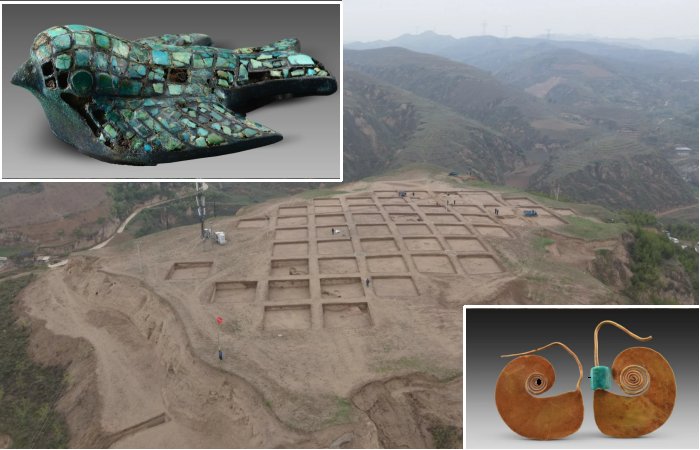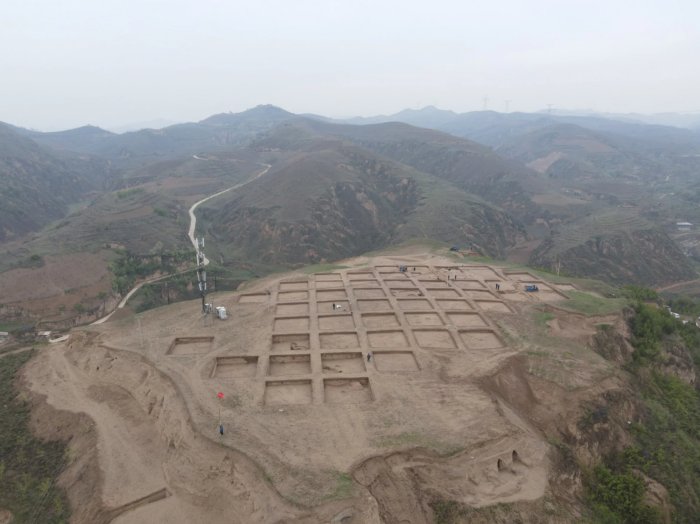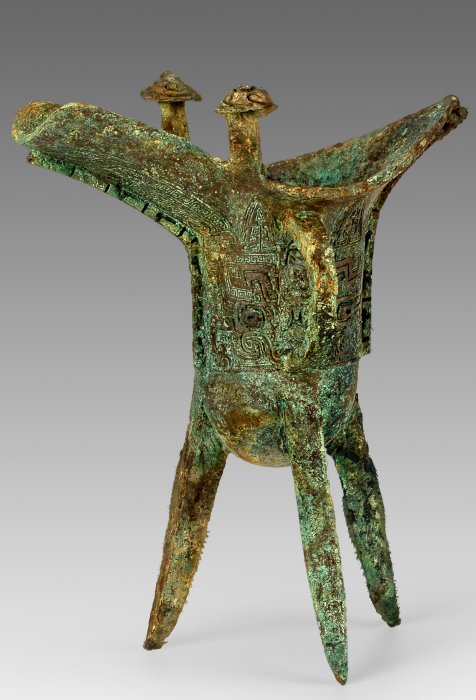Jan Bartek - AncientPages.com - For the last 80 years, farmers in the Shanxi-Shaanxi Plateau, China, have encountered many Bronze Age artifacts in the fields. Many locals sent these ancient objects to authorities, and several artifacts can be seen in museums. Still, archaeological experts have long wondered where these beautiful 3,000-year-old jade objects originated.
Part of a large Bronze Age city was unearthed at the Zhaigou site. Credit: Shaanxi Academy of Archaeology
A fascinating archaeological discovery seems to have solved this mystery. While excavating in the Zhaigou site in Qingjian County, Yulin City, Shaanxi province, archaeologists unearthed a large fortified Bronze Age city filled with magnificent treasures made during the Shang Dynasty, which ruled northern China from about 1600 B.C. to 1046 B.C.
Shaanxi and neighboring Henan and Shanxi make up the so-called "cradle" of ancient Chinese civilization in the Yellow River basin. The Xia Dynasty was the first recorded dynasty in China, but its existence is disputed by archeological and historical evidence.
A bronze drinking vessel unearthed at the site. Credit: Shaanxi Academy of Archaeology
Scientists report the lost Bronze Age city was hidden beneath the earth and contains at least nine high-level aristocratic tombs. Sun Zhanwei, a researcher at the Shaanxi Academy of Archaeology, states that seven of these tombs have passages, which means they probably belonged to leaders of various groups.
"Tomb passages symbolize a high social status. For example, kings of the Shang Dynasty had four tomb passages. Some people inferior in rank to them, maybe members of the royal family, had two. In this hierarchy, those without a high status could not have a tomb passage," Zhanwei told China Daily.
When archaeologists examined the tombs, they found a large number of magnificent objects, such as exquisite bronzeware, jadeware, bone artifacts, lacquerware, and tortoise shells. The artifacts also included bronze drinking vessels, painted ceramics, small earrings of gold and jade, and a finely carved jade bird. In one of the graves, there was also a bronze horse-drawn chariot and the remains of horses, which will be "crucial evidence for exploring the emergence of chariots in China and the development of chariot burial customs."
A bronze component of a carriage shaped like a beast face was discovered in one of the tombs. Credit: Shaanxi Academy of Archaeology
Based on the valuable grave goods, scientists concluded this Bronze Age city must have been a vital power center about 3,000 years ago. At the news conference, experts also raised the possibility that the ruins at Zhaigou may have once been the capital of a separate state that had been conquered by the Shang, who were based in the city of Yinxu in Henan, and, after that, paid tribute to them.
A bronze ornament in the shape of a bird. Credit: Shaanxi Academy of Archaeology
With a large-scale rammed earth works construction at the center, archaeologists have found areas for different functions like handicraft workshops and tombs on 11 hills surrounding the center area.
A pair of golden earrings discovered. Credit: Shaanxi Academy of Archaeology
"All of the basic elements of a central settlement have been discovered at the site," Xu Lianggao, a researcher with the Institute of Archaeology, which is part of the Chinese Academy of Social Sciences told China Daily. "We found some tombs and large-scale structures in this area in the past, but this time the complete face of a settlement has been unveiled."
The research team points out that these are some of the wealthiest graves ever discovered in the region.
See also: More Archaeology News
According to the National Cultural Heritage Administration, the ancient city is so impressive it has been hailed as "one of the greatest finds" of the Shang Dynasty (c. 1600–1046 f.Kr.), China's first historical dynasty.
Studies show the fortified Bronze Age city at the Zhaigou site is spread over 11 hills and covers over 1.2 square miles (3 square kilometers).
Written by Jan Bartek - AncientPages.com Staff Writer








